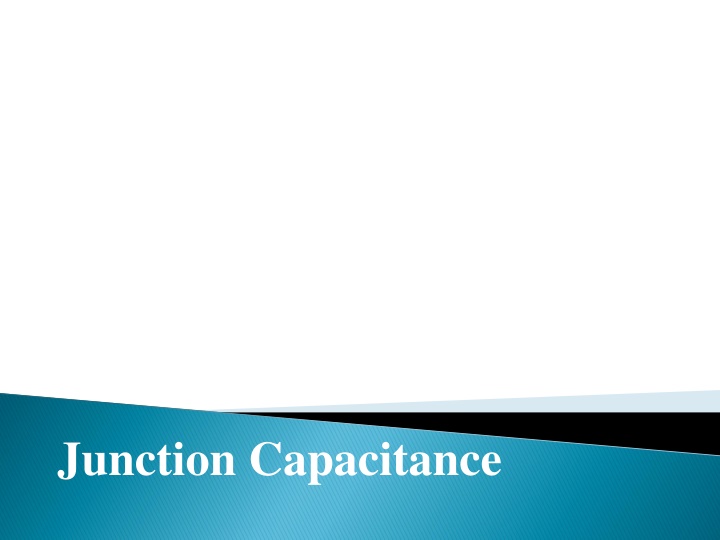
Capacitors and Junction Capacitance in Electronics
Learn about capacitors, electronic components that store electrical energy, and junction capacitance in semiconductors. Discover how capacitors work, their structure with parallel conductive plates separated by a dielectric, and how they store electric charge when voltage is applied. Explore the accumulation of positive and negative charges on the plates, the role of the dielectric, and the concept of capacitance. Gain insights into the flow of charge carriers and the electric field between capacitor plates.
Download Presentation

Please find below an Image/Link to download the presentation.
The content on the website is provided AS IS for your information and personal use only. It may not be sold, licensed, or shared on other websites without obtaining consent from the author. If you encounter any issues during the download, it is possible that the publisher has removed the file from their server.
You are allowed to download the files provided on this website for personal or commercial use, subject to the condition that they are used lawfully. All files are the property of their respective owners.
The content on the website is provided AS IS for your information and personal use only. It may not be sold, licensed, or shared on other websites without obtaining consent from the author.
E N D
Presentation Transcript
Capacitor A capacitor is an electronic component that stores electrical energy or electric charge in the form of an electric field. SEMICONDUCTORS IBRAHIM A. ATIYAH
The basic capacitor is made up of two parallel conductive separated by a dielectric (which acts like an insulator). plates (which acts like electrodes) Note that the dielectric is poor conductor of electricity so it does not allow electric current through it, but it allows electric field or electric force. SEMICONDUCTORS IBRAHIM A. ATIYAH
When voltage is applied to the capacitor in such a way that the negative terminal of the battery electrode or plate and the positive terminal of the battery is connected to the left side electrode, the capacitor starts storing electric charge. Because number of electrons start flowing from the negative terminal of the battery into the right side plate, a large number of atoms in the right side plate gains extra electrons and becomes negatively charged. is connected to the right side of this supply voltage, a large SEMICONDUCTORS IBRAHIM A. ATIYAH
The free electrons in the right side plate or electrode will try move into the dielectric. However, dielectric blocks these electrons. As a result, a large number of electrons are built up on the right side plate. Thus, the right side plate becomes a negatively charged electrode. The dielectric blocks flow of charge carriers (free electrons) but allows electric force electrode. exerted by the negatively charged SEMICONDUCTORS IBRAHIM A. ATIYAH
On the other hand, the electrons on the left side plate experience a strong attractive force from the positive terminal of the battery. As a result, a large number of electrons leave the left side plate and flow towards the positive terminal of the battery. So, a positive charge is accumulated on the left side plate. The positive and negative charges accumulated on both plates exert attractive force on each other. This attractive force between the plates is nothing but the electric field between the plates. Since electric stored. Thus, there exists a capacitance at both the plates. Since the electric charge the capacitance charge. So at both plates, the charge is capacitance is is the the ability ability to to store store SEMICONDUCTORS IBRAHIM A. ATIYAH
SEMICONDUCTORS IBRAHIM A. ATIYAH
SEMICONDUCTORS IBRAHIM A. ATIYAH
SEMICONDUCTORS IBRAHIM A. ATIYAH
SEMICONDUCTORS IBRAHIM A. ATIYAH
SEMICONDUCTORS IBRAHIM A. ATIYAH
SEMICONDUCTORS IBRAHIM A. ATIYAH
SEMICONDUCTORS IBRAHIM A. ATIYAH
SEMICONDUCTORS IBRAHIM A. ATIYAH
END END SEMICONDUCTORS IBRAHIM A. ATIYAH








